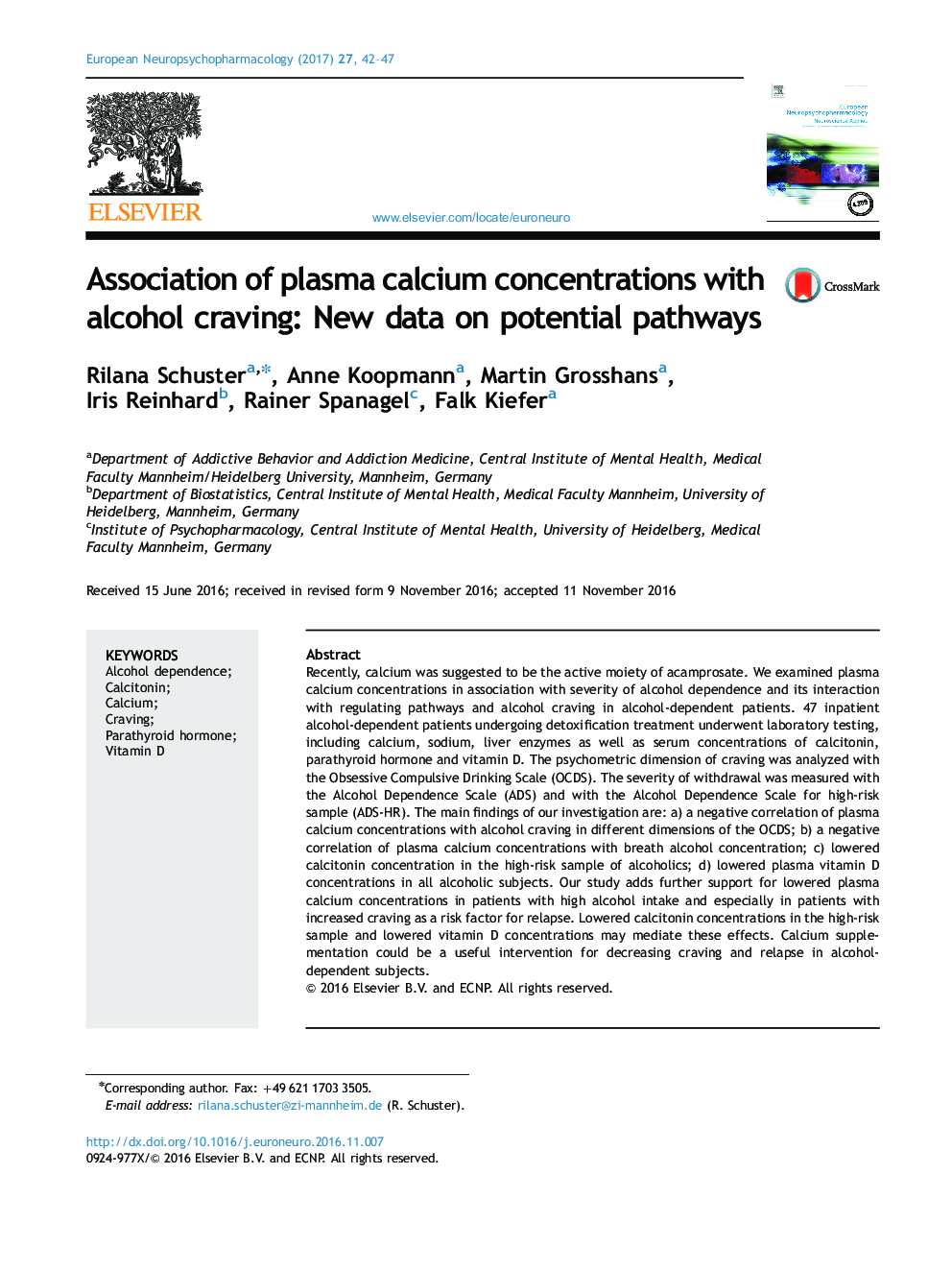| Article ID | Journal | Published Year | Pages | File Type |
|---|---|---|---|---|
| 4930526 | European Neuropsychopharmacology | 2017 | 6 Pages |
Recently, calcium was suggested to be the active moiety of acamprosate. We examined plasma calcium concentrations in association with severity of alcohol dependence and its interaction with regulating pathways and alcohol craving in alcohol-dependent patients. 47 inpatient alcohol-dependent patients undergoing detoxification treatment underwent laboratory testing, including calcium, sodium, liver enzymes as well as serum concentrations of calcitonin, parathyroid hormone and vitamin D. The psychometric dimension of craving was analyzed with the Obsessive Compulsive Drinking Scale (OCDS). The severity of withdrawal was measured with the Alcohol Dependence Scale (ADS) and with the Alcohol Dependence Scale for high-risk sample (ADS-HR). The main findings of our investigation are: a) a negative correlation of plasma calcium concentrations with alcohol craving in different dimensions of the OCDS; b) a negative correlation of plasma calcium concentrations with breath alcohol concentration; c) lowered calcitonin concentration in the high-risk sample of alcoholics; d) lowered plasma vitamin D concentrations in all alcoholic subjects. Our study adds further support for lowered plasma calcium concentrations in patients with high alcohol intake and especially in patients with increased craving as a risk factor for relapse. Lowered calcitonin concentrations in the high-risk sample and lowered vitamin D concentrations may mediate these effects. Calcium supplementation could be a useful intervention for decreasing craving and relapse in alcohol-dependent subjects.
